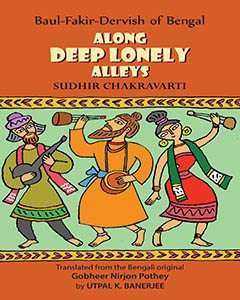During the entire decade of the 1960s, Sudhir Chakravarti traversed the space covering Nadia, Bardhaman, Birbhum and Murshidabad in this Bengal and Meherpur and Kusthia in the other Bengal (Bangladesh) comprising countless villages to look for so many hidden meta-religions as practised by wandering minstrels who are known as bauls, bairagis, dervishes, fakirs, sahajiyas and udasins. Cutting across tiny hamlets and settlements tucked away in the farthest corners of Bengal he completed an intensive research and the result was his much-acclaimed book Gobheer Nirjon Pothey. The present volume under review is the English translation of that book and we need to congratulate Utpal K. Banerjee for the wonderful job he has done and for providing the base for a much wider readership.
After looking for folk religion and folk music in villages for years together, tracing the vanishing sects and sub-sects and trying to find the truth in the followers’ devotion, Chakravarti came to realize that it was in part a conundrum, quite a bit of a ploy to fool the ignorant urbanites; but if one could strike the right person (knock on the right door), one could be rewarded with more than what one had expected.

